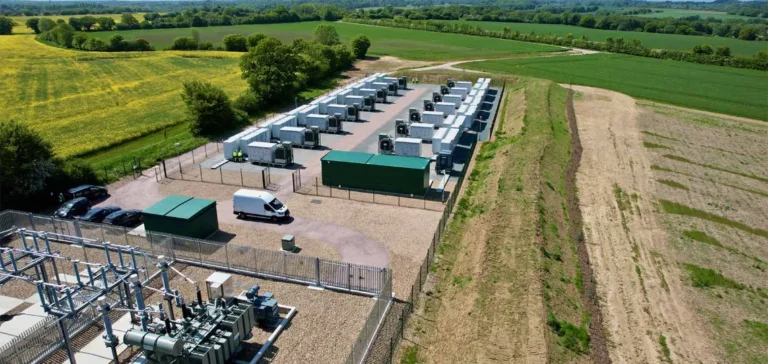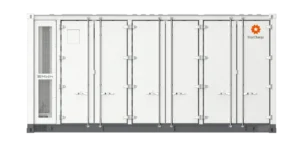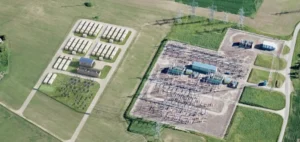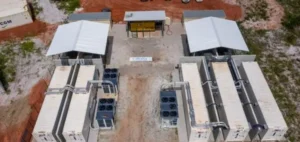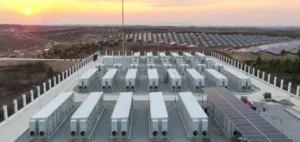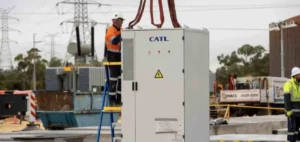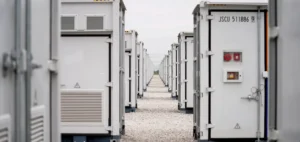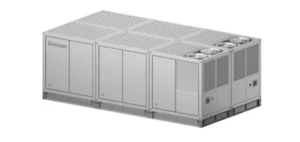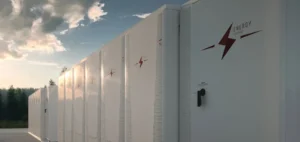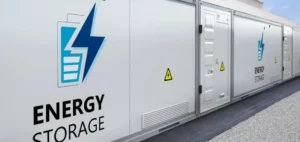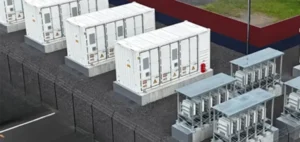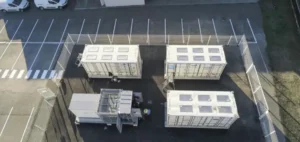According to a report published by consulting firm Wood Mackenzie on July 2, global expansion of renewable energies will require $1.2 trillion in investments in Battery Energy Storage Systems (BESS) by 2034. This assessment is based on the projected integration of over 5,900 gigawatts (GW) of wind and solar capacity into global electrical grids. Battery energy storage systems appear as a critical technological solution to maintain stability and reliability of grids facing a massive increase in renewable energy inputs. The technology known as Grid-Forming (GFM) is specifically identified as strategic for managing this energy transition.
Emergence of a technological need
The report identifies a potential capacity gap, estimated at 1,400 GW, regarding battery energy storage using GFM technology over the period from 2024 to 2034. Unlike conventional Grid-Following systems, which adapt to existing grid conditions, GFM systems can actively generate stable and autonomous voltage, directly supporting the electrical grid. This feature becomes crucial as intermittent renewable energies occupy an increasingly significant portion of electrical systems.
Several markets in the Asia-Pacific region, notably China, India, Japan, and Vietnam, are currently facing high renewable penetration rates, sometimes reaching up to 92% of peak-time demand. This situation regularly leads to grid stability issues and renewable production curtailments. Consequently, the need to enhance storage capacities adapted to these scenarios is becoming particularly urgent in these regions.
Costs declining despite technical challenges
Adding Grid-Forming functionalities leads to an average cost increase of 15% per system, mainly due to required inverters, controllers, and software. However, this increase tends to be offset by an overall decline in battery prices. According to Wood Mackenzie, average global battery storage prices have decreased by between 10% and 40% across different regions over the past year.
The reduction in costs for these systems increases their competitiveness, facilitating widespread adoption across various markets. For instance, hybrid installations combining batteries with photovoltaic solar already economically rival onshore wind in many parts of the world. The report even projects that, outside the United States, battery storage costs will be lower than those of coal or gas power plants by 2040.
Regulatory framework favourable to grid stabilisation
Parallel to technical and economic challenges, the regulatory framework is evolving favourably towards the integration of Grid-Forming systems. Major markets such as China, the United States, and Australia have recently adopted clear technical guidelines, facilitating the deployment of these advanced batteries onto their grids. These regulations highlight a growing recognition of the strategic role of GFM systems in scenarios of high renewable energy penetration.
The global electricity demand, projected to grow at an annual average rate of 3% through 2040, further accentuates the need to deploy technological solutions capable of optimal grid management. As intermittent energies become dominant, GFM batteries may emerge as a central solution for ensuring electrical stability.
Robert Liew, research director at Wood Mackenzie, concludes: “Grid-Forming battery energy storage is on track to become a fundamental requirement in the energy sector. This technology will enable full exploitation of large-scale global renewable energy investments.”


